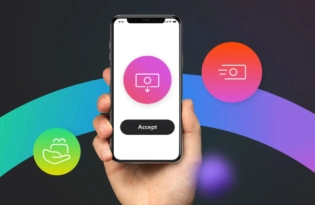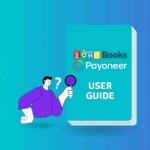Online checkout & payment gateways: what they are and how they work
Online checkout and payment gateways are crucial components of ecommerce, facilitating secure and smooth transactions between businesses and customers. In this article, we will explore what they are, how they work, their benefits, and more.

What is an online checkout?
When making a purchase online, the checkout process involves entering billing and shipping information, selecting a payment method, and confirming the order. The checkout page is the final step before a transaction is processed. It’s essential for businesses to optimize the checkout experience to increase conversions and reduce cart abandonment rates.
What is a payment gateway?
A payment gateway is a technology that securely processes online payments from customers. It facilitates the transfer of sensitive information, such as credit card details, between the customer, merchant, and bank. Payment gateways use encryption and tokenization to protect this data and prevent fraud.
How do online checkouts and payment gateways work together?
When a customer enters their payment information on the checkout page, the data is securely transmitted to the payment gateway. The payment gateway then verifies the customer’s identity, checks for sufficient funds, and authorizes the transaction. If the payment is approved, the funds are transferred to the merchant’s account. The entire process takes only a few seconds.
Benefits of online checkout and payment gateways
Online checkout and payment gateways offer several benefits to businesses and customers, including:
- Convenience: Customers can make purchases from anywhere, at any time, and using any device.
- Security: Payment gateways use advanced security measures to protect customer information and prevent fraud.
- Increased sales: Providing a seamless and easy checkout experience can increase conversions and reduce cart abandonment rates.
- Global reach: Payment gateways enable businesses to sell to customers all over the world, regardless of their location or currency.
- Integration: Payment gateways can integrate with a variety of ecommerce platforms and tools, making it easy for businesses to manage their payments.
Online checkout and payment gateway best practices
To optimize your online checkout and payment gateway, consider the following best practices:
- Keep it simple: Streamline the checkout process by minimizing the number of steps and fields required.
- Offer multiple payment options: Provide customers with a variety of payment options, including credit cards, debit cards, PayPal, and Apple Pay.
- Provide security: Use a reputable payment gateway that offers advanced security features such as encryption, fraud detection, and chargeback protection.
- Test and optimize: Continuously test and optimize your checkout process to identify and address any issues that may be impacting conversions.
- Provide support: Offer clear and concise instructions and support throughout the checkout process to minimize confusion and errors.
By implementing these best practices, businesses can improve their checkout process, increase conversions, and provide a positive experience for their customers.
Online checkout and payment gateway dictionary
Here are some important terms to familiarize yourself with that are often used to discuss online checkouts and payment gateways.
- Credit card authorization: Credit card authorization is the process of verifying that a customer’s credit card is valid and has sufficient funds to complete a transaction. This process typically involves sending a request to the issuing bank to authorize the transaction.
- Fraud management: Fraud management refers to the processes and systems that businesses use to prevent, detect, and respond to fraudulent activity related to online payments. This may include tools such as fraud detection algorithms, address verification, and chargeback management.
- Chargebacks: A chargeback occurs when a customer disputes a charge on their credit card and the funds are returned to the customer, often due to fraudulent or unauthorized activity. The merchant may be required to provide evidence to defend the charge and may incur fees or penalties.
- Hard decline: A hard decline occurs when a payment is rejected by the issuing bank due to insufficient funds, an expired card, or other issues with the cardholder’s account. The transaction cannot be completed.
- Soft decline: A soft decline occurs when a payment is rejected by the issuing bank for reasons such as an invalid CVV or address verification failure. The transaction can still be approved if the issue is resolved, such as by updating the billing information.
- Dynamic pricing: Dynamic pricing is a pricing strategy used by some businesses where prices are adjusted based on demand, seasonality, or other factors. Online retailers may use dynamic pricing to offer discounts or promotions to customers during certain times or based on their purchase history.
- Tokenization: Tokenization is the process of converting sensitive payment information, such as credit card numbers, into a unique token that can be used for payment processing without exposing the actual card number. This helps to improve security and reduce the risk of data breaches.
- PCI Compliance: Payment Card Industry (PCI) compliance is a set of security standards that all merchants who accept credit cards must adhere to in order to protect customer data. PCI compliance includes requirements such as using secure payment gateways, encrypting data, and regularly testing security systems.
Frequently asked questions
When selecting a payment gateway, consider factors such as pricing, security features, integration options, and customer support
Yes, you can integrate multiple payment gateways to provide customers with more options.
Payment gateways use various methods to prevent fraud, such as 3D Secure, address verification, and CVV checks.
Yes, payment gateways charge a transaction fee for each payment processed.
A decline occurs when a payment is rejected by the issuing bank or payment processor for reasons such as insufficient funds or an expired card. A chargeback occurs when a customer disputes a charge on their credit card and the funds are returned to the customer.
Some common reasons for chargebacks include fraud, unauthorized transactions, or disputes over the quality or delivery of goods or services. To prevent chargebacks, it’s important to have clear refund and cancellation policies, to monitor for suspicious activity, and to provide excellent customer service.
Dynamic pricing allows you to adjust the price of a product or service based on factors such as demand, time of day, or customer behavior. This can help you maximize revenue and improve the customer experience by offering personalized pricing options.
To improve credit card authorization rates, it’s important to ensure that the billing and shipping information provided by the customer is accurate and up-to-date. You can also use fraud detection tools to minimize the risk of chargebacks and decline rates.
Common types of checkout fraud include stolen credit cards, identity theft, and phishing scams. To prevent fraud, you can use fraud detection tools, require additional verification for high-risk transactions, and educate customers on how to protect their personal information.
Related resources
Latest articles
-
Zoho Books and Payoneer integration guide
Learn how to seamlessly integrate Payoneer with Zoho Books. Follow our step-by-step guide to connect your accounts, create invoices, and manage payments efficiently. Optimize your financial operations today!
-

ICT Industry Leader Predictions for the Tech Sector of Central Asia in 2024
The ICT sector of Central Asia is growing at an incredible rate. But what are the trends that will shape 2024? We sit down with 13 experts to find out.
-
How to register a company in Cyprus: A step-by-step guide
With its low tax rate and strategic location, Cyprus is well established as one of Europe’s top incorporation hubs. In this article, we lay out a step-by-step process for registering a company in Cyprus as well as the top benefits of doing so.
-
Kazakhstan payment landscape: The best ways to send and receive money internationally
The right payment solution for your business saves both time and money. In this infographic, we explore the major players in Kazakhstan’s payment ecosystem for international transfers.
-
Defying the odds: How Ukrainian businesses thrive during war
One year post-war, Ukraine’s businesses adapt and thrive amidst adversity. Entrepreneurs showcase resilience, reflecting national tenacity. Many diversify, venturing into e-commerce and digital realms. Despite hurdles, 44% of SMBs aim for growth, with 36% hiring. Their grit underscores Ukraine’s enduring spirit amid challenges.
-
How to Pay International Freelancers?
Interested in working with freelancers, worldwide? Making international payments to freelancers and independent contractors around the world doesn’t have to be a headache with Payoneer. Learn how to use Payoneer to pay overseas freelancers while saving on international transaction fees and without jumping through hoops.













